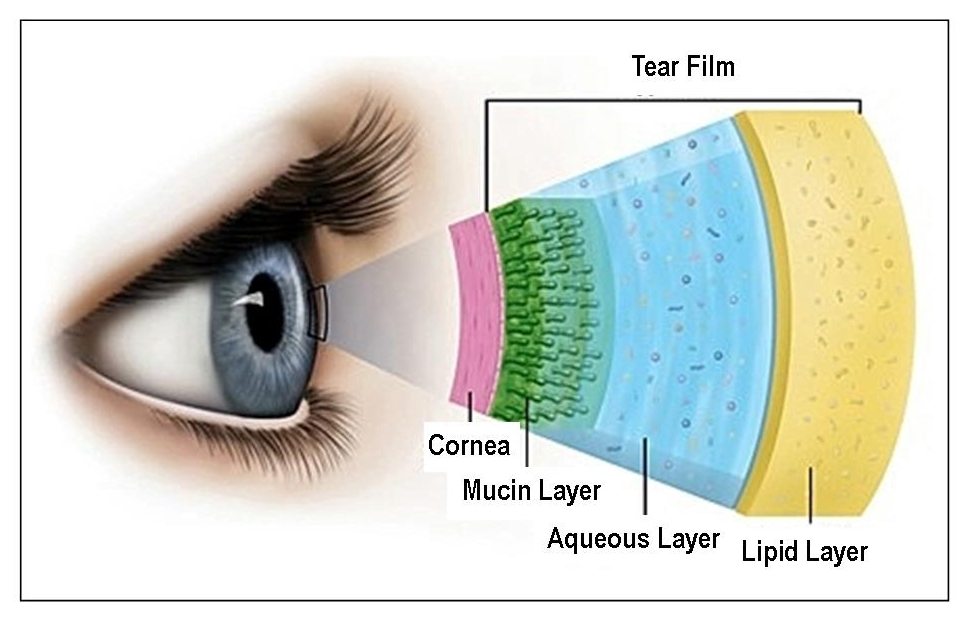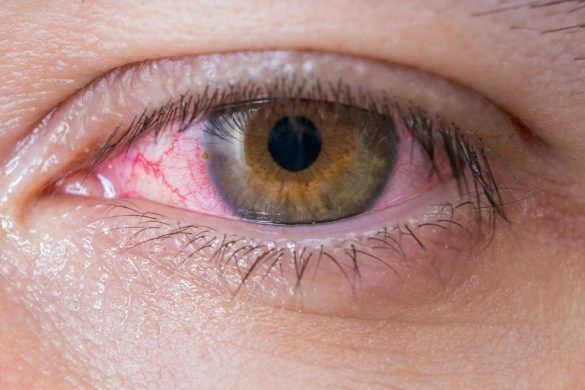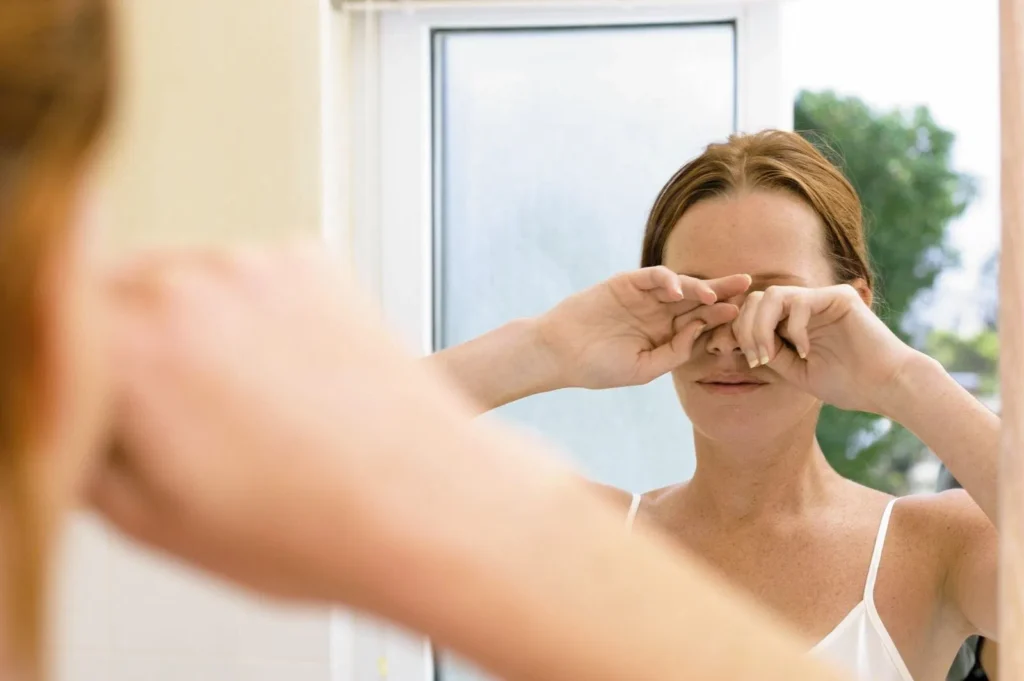If you’ve ever woken up with crusty eyes or sticky residue in the corners of your eyes, you’re definitely not alone. Most people experience this from time to time, and while it’s usually nothing to worry about, understanding what causes it can help you know when it’s normal and when it might signal an underlying eye issue.
At Optical Illusions: An Optometric Practice, we often get patients asking why they get crusty eyes in the morning. The answer depends on several factors — including how much discharge is present, what it looks like, and whether it’s accompanied by irritation, redness, or vision changes.
Top Causes of Crusty Eyes
Here are the most common causes of crusty eyes:
1. Sleep
Crusty eyes are commonly called “sleep crust.” During sleep, the eyes are at rest and do not blink, causing eye discharge to pool in the corners of the eyes and along the lash lines. This causes a harmless debris to form, which is noticeable upon waking. Just wipe it off with a wet face towel and you’re good to go.
2. Conjunctivitis (Pink Eye)
If your eyes are red, itchy, and crusted shut with thick yellow or green discharge, you could have bacterial or viral conjunctivitis.
- Bacterial conjunctivitis often causes sticky discharge and can make your lashes clump together.
- Viral conjunctivitis is usually watery but can still cause morning crusting.
Both are contagious, so it’s important to wash your hands often and avoid touching your eyes.
3. Dry Eye
If your eyes don’t produce enough tears — or the tears evaporate too quickly — they can become dry and irritated. This leads to mucus production as the eye tries to compensate, sometimes resulting in light crusting or sticky residue.
Dry eye is especially common among people who use digital devices frequently, wear contact lenses, or live in low-humidity environments.
4. Eye Allergies
Seasonal or environmental allergies can trigger excess tearing and mucus buildup, which may dry overnight and create more discharge than usual. If your eyes also itch, water, or feel gritty, allergies could be to blame.
5. Blepharitis (Eyelid Inflammation)
Blepharitis occurs when the oil glands at the base of your eyelashes become blocked or inflamed. This condition often causes crusty buildup along the lash line, especially upon waking. You may also notice redness, itching, or a burning sensation.
Blepharitis is chronic but manageable with warm compresses, eyelid hygiene, and treatment from your eye doctor.
6. Blocked Tear Duct
When your tear ducts are blocked or narrow, tears can’t drain properly. This leads to watery eyes during the day and crusty eyes residue after sleeping. In severe cases, it can cause infections that produce yellow or green discharge.

What Is the Crust in the Corner of Your Eyes?
The crust that forms in the corners of your eyes overnight is called rheum, sometimes refered to as sleep crust, and it’s a mix of mucus, oil, skin cells, and tears that have dried out while you sleep. Throughout the day, your eyes continuously produce tears to keep the surface clean, lubricated, and protected from irritants like dust and bacteria.
Every blink helps spread that tear film evenly across your eye and clears away debris through your tear ducts. But when you’re asleep and your eyes are closed for hours, your tear production slows down, and you don’t blink. That’s when small amounts of dried tear film and mucus can accumulate at the corners of your eyes — creating that slightly crusty or sticky feeling when you wake up.
A small amount of this buildup is completely normal and a healthy sign that your eyes are naturally cleansing themselves. However, if you wake up with your eyelids crusted shut or if discharge continues throughout the day, it could be a sign of an eye infection or another condition that requires professional attention.
What Morning Eye Crust Is Made Of
To understand why your eyes produce this residue, it helps to look at what’s in it. Morning eye crust is made up of several components:
- Mucus: Produced by the conjunctiva, the thin membrane covering the white part of your eye and inside your eyelids. This mucus helps trap dirt and debris.
- Oil: Secreted by the meibomian glands, tiny glands in your eyelids that prevent your tears from evaporating too quickly.
- Tears: The watery layer of your tear film contains enzymes that protect against bacteria.
- Skin cells and debris: Natural shedding from the surface of your eyelids and lashes.
When you sleep, these elements mix together, and because blinking stops, the fluid can dry up at the edges of your eyes. This results in that familiar yellowish or white residue that you might gently wipe away in the morning.
A small amount of eye crust in the morning — especially if it’s clear or light yellow, not sticky, and doesn’t cause redness or pain — is a normal part of your body’s cleansing process. If the residue is minimal and clears up quickly after washing your face, there’s generally nothing to worry about.
Waking up with heavy, sticky, or colored discharge that glues your eyelids shut or continues throughout the day may be a sign of an underlying condition.
The Difference Between Normal Eye Mucus and Infection
If you’re unsure whether your morning eye discharge is normal, pay attention to the color, consistency, and frequency of the mucus.
| Type of Discharge | Possible Cause | Normal or Not? |
|---|---|---|
| Clear or white, thin, only in morning | Normal eye rheum | Normal |
| Thick, yellow or green, sticky | Bacterial conjunctivitis or infection | Not normal |
| Watery with mild itchiness | Allergies or viral conjunctivitis | Needs evaluation |
| Stringy, mucous-like | Dry eye or blepharitis | Needs evaluation |
| Persistent throughout the day | Infection or inflammation | Not normal |
If you’re waking up with heavy discharge every day or it’s affecting your ability to open your eyes in the morning, it’s best to schedule an eye exam.
How to Clean Crusty Eyes Safely
If you wake up with mild eye crust, the best way to clean it is gentle and simple:
- Wash your hands thoroughly before touching your eyes.
- Use a warm, clean washcloth — hold it over your closed eyes for a few minutes to soften the crust.
- Wipe gently from the inside corner outward with the clean cloth.
- Avoid harsh rubbing, which can irritate the delicate eyelid skin.
- If you wear contact lenses, wait until your eyes are fully clean and comfortable before inserting them.
Never try to scrape or pick dried crust from your lashes. If your eyes are crusted shut, moisten them with sterile saline drops or a warm compress until they open comfortably.
When to See an Eye Doctor for Crusty Eyes
You should schedule an eye exam if:
- You wake up with crusted eyes every morning that don’t improve.
- The discharge is thick, yellow, or green.
- Your eyes are painful, red, or sensitive to light.
- You experience blurred vision or swelling.
- The crusting happens throughout the day, not just in the morning.
These symptoms could indicate an infection or other eye condition that needs treatment.
At Optical Illusions, our doctors use advanced diagnostic technology like slit-lamp biomicroscopy and imaging systems to evaluate the eyelids, tear glands, and ocular surface. This allows us to pinpoint the cause of your symptoms and create a personalized treatment plan — whether it’s medication, dry eye therapy, or lid hygiene routines.

Treatments for Persistent Crusty Eyes
Treatment depends on the underlying cause:
- Bacterial infection: Antibiotic drops or ointments to clear infection.
- Blepharitis: Daily eyelid scrubs, warm compresses, and sometimes medicated wipes.
- Dry eye syndrome: Artificial tears, prescription eye drops, or advanced treatments like radiofrequency and IPL therapy to restore gland function.
- Allergies: Antihistamine drops and lifestyle adjustments to minimize exposure.
- Blocked tear ducts: Gentle massage, warm compresses, or referral to a specialist for drainage procedures.
Our team at Optical Illusions takes a holistic approach to eye health — combining medical treatment with preventive care to keep your eyes healthy long-term.
Preventing Crusty Eyes
Here are some steps you can take to reduce the chance of waking up with crusty eyes:
- Practice good eyelid hygiene: Clean your lashes regularly, especially if you wear makeup.
- Stay hydrated: Dehydration can affect tear production and lead to dryness.
- Avoid rubbing your eyes: This can worsen inflammation or spread bacteria.
- Replace contact lenses as directed: Don’t sleep in lenses unless approved by your doctor.
- Use a humidifier: Helps maintain moisture if you live in a dry environment.
- Get regular eye exams: Especially if you notice recurring discharge or irritation.
A small amount of discharge is perfectly normal, but if you’re noticing consistent buildup or discomfort, professional evaluation is the best way to protect your eye health.
The Importance of Regular Eye Exams
Even if your eyes feel healthy, annual eye exams are crucial for early detection of potential problems. Many conditions — like dry eye disease, blepharitis, and conjunctivitis — can start mildly but progress over time.
At Optical Illusions: An Optometric Practice, we use the latest diagnostic tools to evaluate your eye surface, tear quality, and eyelid health. Our doctors don’t just check your vision — they look at the overall wellness of your eyes.
With locations in San Jose, San Mateo, San Ramon, and Juneau, we’re proud to be one of the most trusted names in optometry on the West Coast. Our award-winning team has been recognized for excellence in medical eye care, advanced technology, and personalized service.
Schedule an Eye Exam at Optical Illusions
Waking up with a little crust in the corner of your eyes is normal and usually harmless. It’s your body’s natural way of cleaning and protecting your eyes overnight. However, if the discharge is excessive, sticky, or happening throughout the day, it’s time to see an eye doctor.
Your eyes are incredibly sensitive, and even small issues can become serious if left untreated. Whether it’s dryness, infection, or inflammation, early evaluation ensures quick relief and long-term eye health.
If you’re noticing frequent morning crusting or other eye irritation, schedule an exam today at Optical Illusions: An Optometric Practice. Our expert optometrists will identify the cause, provide effective treatment, and help you wake up to clearer, healthier eyes — every day. Schedule your appointment at 1 of our 4 conveniently located offices in San Jose, San Mateo, San Ramon, and Juneau.




